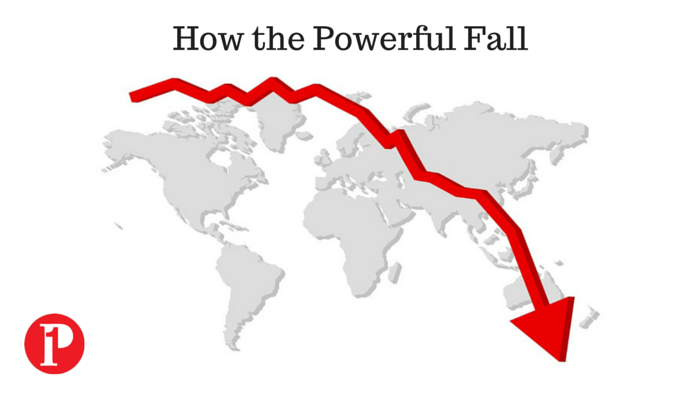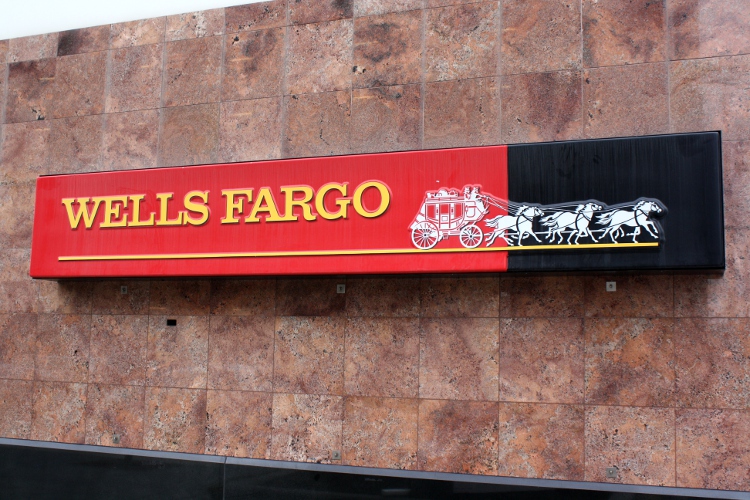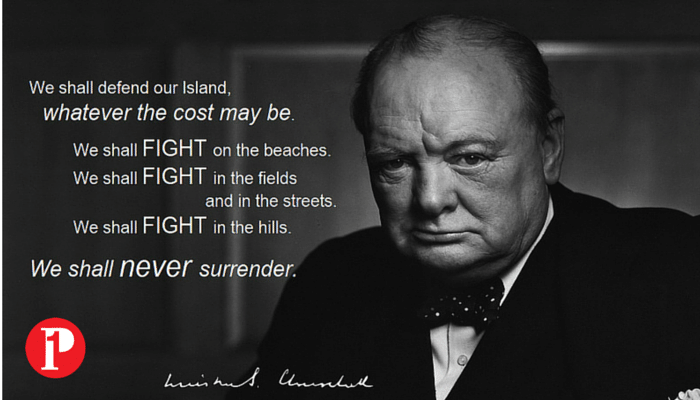
Can business decline be detected early and avoided?
How far can a business fall before the path toward doom becomes inevitable and unshakable?
How can businesses reverse course?
Recently I’ve been writing about B2B and B2C businesses and how they use Social Media content for their success. Why do some businesses get it while others fall?
It was September 25th, 2008 when the United States and it’s financial system was shaken. JPMorgan Chase engineered a desperate deal over the weekend to buy Bear Stearns. Ranked #156th in the Fortune 500 to gone. Lehman Brothers after 158 years of success and growth…collapsed into bankruptcy.
Fannie Mae and Freddie Mac, the iconic institutions in the mortgage world succumbed to government conseravatorship. Merrill Lynch the ultimate symbol of bullish America, taken over.
SILENT CREEP OF IMPENDING DEMISE
History shows, repeatedly that once thriving countries and businesses can fall.
The Egyptian Old Kingdom, the Minoans of Crete, the Chou Dynasty, the Mayan Civilizations, the Hittite Empire all fell. Athens fell. Rome fell. Even Britain teetered, will Brexit bring about growth or demise?
Is America’s fate waiting in the wings?
When you are at the top of your game, top of the world, the most powerful nation on Earth, the most successful company in your industry, the best player in your game, your very success could be covering up the fact that you’re already in decline.
So, how would you know?
- Decline can be avoided.
- Decline can be detected.
- Decline can be reversed.
Great companies can stumble, badly, and recover. One need to look no further than Bank of America in the 80’s. One of the most successful companies in the world, but would also post some of the biggest losses in U.S. banking history. The stock fell more than 80 percent behind the general stock market.
Every business, no matter how great, is vulnerable to decline. There is no law of nature that the most powerful will inevitably remain on top.
Anyone can fall and most eventually do.
Let’s take a look at the five stages of decline that are evident in business large and small.
FIVE STAGES OF DECLINE
Stage 1: Excessive Pride born of Success
Many businesses can become insulated by success. We’ve all seen this, businesses are successful in spite of their leaders. Leaders who make poor decisions or lose discipline.
We’ve witnessed arrogance that starts to creep in. Many lose sight of the underlying factors that created success in the first place.
When the rhetoric of success “We’re successful because we do these specific things” replaces the WHY we do these specific things. Decline will likely follow.
Excessive pride blinds one to the role luck and chance sometimes play in some successful outcomes.
Stage 2: Willful pursuit of more
- More Growth
- More Scale
- More Fame
Whatever those in power see as “SUCCESS”.
Those in and of itself are not bad. It’s how they are used and obtained that create challenges. Most businesses small and large stray from the disciplined creativity that led them to greatness in the first place.
Can you stop and think of a few companies that fit into this stage?
You see undisciplined leaps into areas where they cannot be great or growing faster than they can achieve excellence lead to challenges.
Resistance to change remain dangers to any business in today’s fast paced world. You’ve heard this before…We’ve been doing it this way for 50 years. Many businesses are dying on the vine.
Social Media Marketing has changed the business paradigm of communicating and marketing. Yet many are not using it strategically leading to failing results.
Stage 3: Denial of Risk and Peril
At this stage some internal alarm bells start to go off, yet results remain strong enough to explain away disturbing data or suggest that these difficulties are only temporary.
Leaders in this stage typically blame external factors for setbacks rather than accept responsibility. What businesses come to mind? Institutions? Government?
Leaders in this stage seem to put the businesses, institutions and government at risk. Taking on more debt that cannot be paid back, and acting in a way that denies the consequences of those risks. They are headed straight for Stage 4.
Stage 4: Grasping for Salvation
The culmination of these risks gone bad start to assert themselves throwing the business into a sharp decline visible to all. What institutions? Businesses? and Government’s come to mind?
Common people to the rescue are:
- Charismatic leaders
- Bold and new untested strategies
- Radical transformation
- An revolutionary new product or service
- A game changer acquisition
Initial results from taking dramatic action appear positive, but do not last.
Stage 5: Capitulation
The longer a business remains in Stage 4, repeatedly grasping for silver bullets, the more likely it will spiral downward.
Setbacks after setbacks, expensive false starts erode financial stability and individual spirit that causes most leaders to abandon all hope of building a great future. In some cases, leaders just sell out. In other instances the institution just atrophies into insignificance. Worst case it just withers away and simply dies outright.
Some companies can languish for years or decades. Take Zenith, it took three decades to move through all five stages. Rubbermaid fell from the end of Stage 2 all the way to Stage 5 in just five years.
IS THERE A WAY OUT?
First, we do ourselves a disservice by studying only success. We learn far more by examining why a great company fell into mediocrity (or worse) and comparing it to a company that sustained its success.
Look at the bank Wells Fargo founded in 1852. I had the pleasure of running a national division for Wells and learned a great deal from their leaders by being on multiple committees such as strategy and marketing. They were always looking forward, not chasing the next shiny object and clear about their direction without hubris.

What many people don’t know is that the founders William Fargo and Henry Wells founded American Express in 1850. Both companies thriving today 160+ years later.
I was also fortunate enough to start my sales career with Xerox. Xerox was a great training ground for sales, yet profoundly proud. Many of us could see that the Japanese products were coming to market with better features at a lower cost. Management didn’t want to hear that from the field and when they did, the leadership proudly announced were XEROX! The stock had cropped 92 percent in less than two years. They survived through Stage 4, but it has been a painful process and lesson.

All companies go through ups and downs, and many show signs of Stage 1 or 2, and even Stage 3 or 4 at some point in their histories. Not all stages lead to Stage 5.
Proctor & Gamble have made mistakes and recovered. So has 3M, and Johnson and Johnson.
You might wonder, what should we do if we find ourselves falling?
It turns out that much of the answer lies in adhering to highly disciplined management practices.
Take Wal Mart and it’s founder Sam Walton. He was a humble man, success didn’t change Sam Walton. Walton frequently stated that Wal Mart did not exist for the aggrandizement of it’s leaders; it exists for it’s customers!
HOPE ON THE HORIZON
Xerox, Nucor, IBM, Texas Instruments, Pitney Bowes, Nordstrom, Disney, Boeing, HP, Merck. What do these companies have in common? Every one took as least one tremendous fall at some point in it’s history and recovered.
If you’ve fallen into decline, get back to solid management disciplines-NOW! If your’re still strong, be vigilant for early markers of decline. Above all, do not ever capitulate to the idea that an era of success must inevitably be followed by decline.
The difference between truly great versus successful is not the absence of difficulty and struggles, but the ability to bounce back against all odds.
Choosing the right leaders and people for the team.
What makes for the “RIGHT PEOPLE” ?
- The right people fit with the companies core values.
- The right people don’t need to be tightly managed.
- The right people understand that they do not have “JOBS” they have “RESPONSIBILITIES.”
- The right people fulfill their commitments.
- The right people are passionate about the company and it’s work.
- The right people display “Window and Mirror” maturity.
In 1941, during dark hours for England, Winston Churchill returned to his old school Harrow to deliver the commencement address.
When introduced, Churchill made his way to the podium. He peered across the audience and said “This is the Lesson.”
-
Never Give In
-
Never Give Up
NEVER, NEVER, NEVER, NEVER – in nothing great or small, large or petty- Never give in except to Convictions of honor and good sense.
NEVER yield to force; Never yield to apparently overwhelming might of the enemy.

Be willing to change tactics, but never give up your core purpose. Be willing to kill failed business ideas, even to shutter big operations you’ve been in for a long time, but never give up on the idea of building a great company!
Source: How the Mighty Fall
About Blair

Blair Evan Ball is a Social Media Coach and founder of Prepare1, a company that works with businesses, individuals and non-profits. He is a former executive with a Fortune 50 company, and his national division did $1Billion+ in sales annually.
Blair has written three e-books: Facebook for Business Made Easy, Facebook Pages for Business Made Easy, and WordPress Blog Setup Made Easy.
Blair also educates, trains entrepreneurs and business professionals how to amplify their brand, increase revenues, and raise more funds.
![[Study] How Will Businesses Change Their Social Media Activities 5 Golden Rules for Sharing on Social Media](https://www.prepare1.com/wp-content/uploads/2014/03/COACH-logohat-162x300.jpg) The Race is ON! | PREPARE | Get into the Game and WIN!
The Race is ON! | PREPARE | Get into the Game and WIN!











Comments on this entry are closed.
{ 1 trackback }